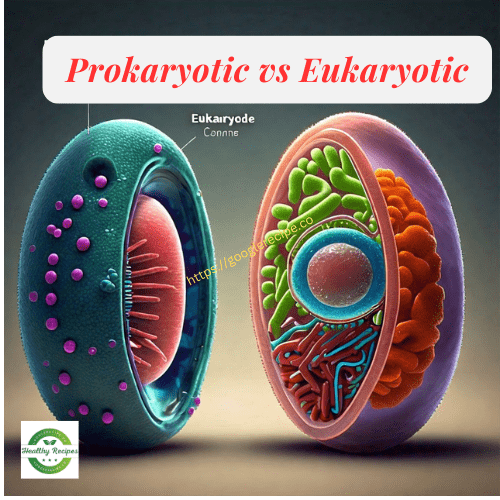Codominance
Understanding Codominance: A Deeper Dive into Genetics
Codominance? We delved into monohybrid crosses and Punnett squares, exploring how they help us understand inheritance patterns of single characteristics like pea pod color. Today, we will take a closer look at a fascinating genetic phenomenon called codominance.
Genotype and Phenotype: A Quick Recap
Before diving into codominance, let’s briefly revisit some key concepts. The genotype refers to the genetic makeup of an organism – the set of genes it carries.
The observable physical or biochemical traits of an organism that result from both genetic make-up and environmental factors are known as its phenotype.
Monohybrid Crosses and Dominance
In monohybrid crosses, we study the inheritance of a single characteristic. For example, when crossing pea plants, the pods can either be green or yellow.
The yellow allele (Y) is dominant over the green allele (y), so a genotype of YY or Yy results in yellow pods, while yy results in green pods. This is an example of complete dominance, where one allele completely masks the expression of the other.
Introducing Codominance
Codominance appear when the couple alleles in a heterozygous organism add fairly and clearly to the phenotype. Unlike complete dominance, where one allele overshadows the other, codominant alleles are both fully expressed.
Codominance in Animals and Plants
One classic example of codominance is found in chickens. If a chicken inherits a black feather allele (B) from one parent and a white feather allele (W) from the other, the resulting phenotype will be speckled with both black and white feathers (BW).
Neither the black nor the white allele is dominant, so both are expressed simultaneously.
Codominance is also observed in roan horses, where the coat color is a mix of red and white hairs, and in certain plants where flower colors can be a blend of two different colors.
Codominance in Human Blood Groups
Human blood groups provide a clear example of codominance. The ABO blood group system involves three alleles: I^A, I^B, and i^O. The alleles I^A and I^B are codominant, while i^O is recessive.
Here are the possible genotypes and their corresponding phenotypes:
- I^A I^A or I^A i^O: Blood group A
- I^B I^B or I^B i^O: Blood group B
- I^A I^B: Blood group AB (both A and B antigens are expressed)
- i^O i^O: Blood group O
When both I^A and I^B alleles are present (I^A I^B), the individual has blood group AB, demonstrating codominance since both A and B antigens are equally expressed.
Visualizing Codominance with Punnett Squares
To further understand codominance, let’s use a Punnett square. Suppose a father has the genotype I^A i^O (blood group A) and the mother has the genotype I^B i^O (blood group B). The Punnett equal would view like this:
| I^A | i^O | |
|---|---|---|
| I^B | I^A I^B (AB) | I^B i^O (B) |
| i^O | I^A i^O (A) | i^O i^O (O) |
The possible offspring genotypes and corresponding phenotypes are:
- I^A I^B: Blood group AB
- I^B i^O: Blood group B
- I^A i^O: Blood group A
- i^O i^O: Blood group O
This demonstrates the equal expression of I^A and I^B in the AB blood group, a hallmark of codominance.
Conclusion
Codominance is an essential concept in genetics, illustrating how both alleles can influence an organism’s phenotype without one being dominant over the other.
The ABO blood group system serves as an example of how this can occur in various species, including plants, animals, and even humans. Understanding codominance helps us appreciate the complexity and diversity of genetic inheritance.
Stay tuned for more fascinating insights into genetics, where we’ll explore other inheritance patterns and their implications!
FAQs on Codominance and Genetics
1. What is codominance?
Codominance is a genetic scheme where the pair alleles in a heterozygous organism are fully dispatched, subsequent in a phenotype that shows the pair traits fairly. Neither allele is leading over the alternative.
2. How does codominance differ from complete dominance?
In complete dominance, one allele completely masks the expression of another in the phenotype. In codominance, both alleles are equally expressed, and both traits are visible in the organism.
3. Can you give an example of codominance in animals?
Yes, a common example is found in chickens. When a chicken inherits a black feather allele from one parent and a white feather allele from the other, it results in a speckled black and white feather pattern, showing both traits.
4. How is codominance observed in human blood groups?
The ABO blood group system demonstrates codominance. The alleles I^A and I^B are codominant, meaning that if a person inherits both, their blood type will be AB, expressing both A and B antigens.
5. What is the difference between genotype and phenotype?
The genotype is the genetic makeup of an organism, consisting of the alleles inherited from the parents. The genotype and environmental factors work together to determine the phenotype, which is the observable physical or biochemical characteristics of an organism.
6. What is a Punnett square and how is it used?
Biologists use a Punnett square diagram to predict the likelihood that a child will have a particular genotype. It helps visualize how alleles from each parent can combine and what the resulting genotypes and phenotypes will be.
7. Can you explain the ABO blood group system using codominance?
Certainly. The ABO blood group system involves three alleles: I^A, I^B, and i^O. The I^A and I^B alleles are codominant, while i^O is recessive.
A person with the genotype I^A I^B will have blood group AB, expressing both A and B antigens. If someone inherits I^A and i^O, they will have blood group A, as I^A is dominant over i^O.
8. How does codominance affect genetic diversity?
Codominance increases genetic diversity by allowing multiple alleles to be expressed equally in a population. This can lead to a variety of phenotypes, contributing to the adaptability and survival of species.


